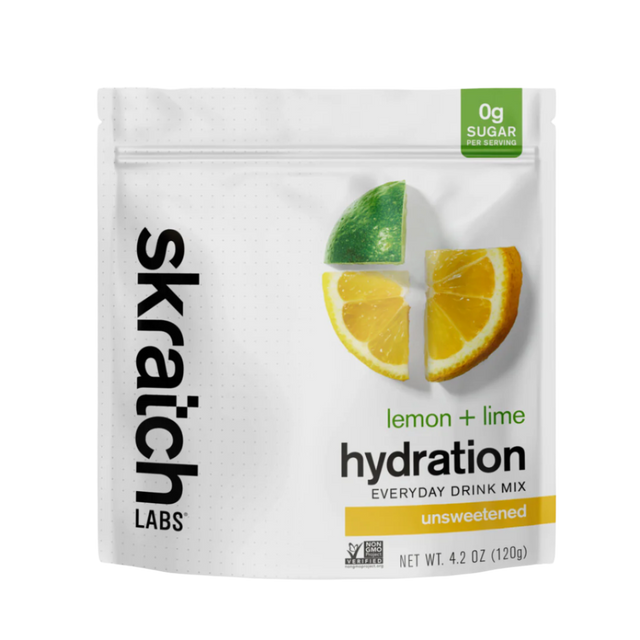What is Hyperhydration?
When competing in endurance events it’s almost impossible to replenish all hydration and electrolyte losses (1). To avoid dehydration endurance athletes rely on being adequately hydrated leading into the race. Research has found however, that athletes often tend to fail to adequately hydrate themselves during race week (2). This is where hyperhydration strategies can make one of the most significant nutritional impacts on race day performance for endurance athletes racing in the heat. In fact a study on male runners found that we can increase our fluid retention up to 44.8% (3,4).

What is Hyperhydration and how do we Implement it?
Hyperhydration, or sometimes referred to as prehydration, is the intentional consumption of electrolyte fluids in order to enhance fluid stores at the start line so you can better keep your cool and power to the finish. Hyperhydrating aims to provide a small fluid excess to compensate for sweat loss during exercise in hot conditions that is unable to be replaced during exercise (4,5,6,7).
Hypohydration (greater than 2% body mass loss through sweat) can negatively affect team sport skill, cognitive and endurance performance in both genders (8,9,10). Dehydration will reduce performance before lack of energy will. Keep in mind that the following information comes from studies that are predominantly done on males and females are vastly underrepresented in this area of research. Which is ironic when exercise-associated hyponatremia is more common in women (7).
An endurance athlete can lose as much as 11–12% of body weight in the form of water during a 12.3-h Ironman triathlon in a cool environment (10). Interestingly, athletes can actually lose up to 50% of our sodium stores and not be affected. This means that an emphasis on fluid, and not so much sodium is recommended. We do need some sodium though as it helps absorb and retain fluid in the body and therefore plays a key role in hydration (11).
To be adequately hydrated we want to work with the small intestine to maximise fluid absorption. Optimal pressure of the small intestines is around 200 milliosmols. This means consuming an electrolyte mix that contains a moderate sodium (40mmol/L, 100-120mg of sodium/L) and glucose (1-3g of carbs/100ml) mix to increase the pressure in the small intestines to activate fluid absorption gates and transport mechanisms. A serving of Skratch Labs Sports Hydration Drink Mix, ½ serving of Dr. Hydrate All-In-One Drink with 600-700ml of water and a recommended serving of Precision Fuel & Hydration PH 1000 Electrolyte Drink Mix all create the ideal pressure. This is for hydration during exercise.
To Achieve Hyperhydration
For hyperhydration we want a product with much higher sodium such as Sodii Everyday Hydration Salts.

Indicators of Under-Hydration
-
Headache post-training
-
Dark, low volume of urine
-
Dizziness/light-headedness.
-
Fatigue
-
Moodiness/irritability
-
Thirsty
-
Nausea
-
Cramps
-
Decreased endurance performance (12)
How to Hyperhydrate
-
Research has suggested that athletes may achieve euhydration 45 minutes to 4 hours before exercise by pre-hydrating with 5–10 ml per kilo of body mass (4,5,10).
-
Your prehydration mix should be around 164 mmol sodium/L (3772mg/L of sodium).
-
For a 70kg male this would relate to having around 2.5 servings of Sodii Everyday Hydration Salts with 700mL of water on race morning. (sachet variants are HASTA Certified—Sodii Unflavoured versions and all tub variants may not be batch tested.)
Ash Miller
Dietitian and Nutritionist (Masters)
Bachelor of Physical and Health Education
Instagram: @ashthomo_nutrition
References:
1. Rehrer NJ. Fluid and electrolyte balance in ultra-endurance sport. Sports Med. 2001;31:701–715. doi: 10.2165/00007256-200131100-00001.
2. Shirreffs SM, Sawka MN. Fluid and electrolyte needs for training, competition, and recovery. Journal of Sports Sciences. 2011;29(1):39-46.
3. Sims ST, van Vliet L, Cotter JD, Rehrer NJ. Sodium loading aids fluid balance and reduces physiological strain of trained men exercising in the heat. Med Sci Sports Exerc. 2007;39(1):123–130. doi: 10.1249/01.mss.0000241639.97972.4a.
4. Jardine WT, Aisbett B, Kelly MK, Burke LM, Ross ML, Condo D, Périard JD, Carr AJ. The effect of pre-exercise hyperhydration on exercise performance, physiological outcomes and gastrointestinal symptoms: A systematic review. Sports Med. 2023 Nov;53(11):2111-2134. doi: 10.1007/s40279-023-01885-2. Epub 2023 Jul 25. PMID: 37490269; PMCID: PMC10587316.
5. Anderson MJ, Cotter JD, Garnham AP, Casley DJ, Febbraio MA. Effect of glycerol-induced hyperhydration on thermoregulation and metabolism during exercise in heat. Int J Sport Nutr Exerc Metab. 2001;11(3):315–333. doi: 10.1123/ijsnem.11.3.315.
6. Coutts A, Reaburn P, Mummery K, Holmes M. The effect of glycerol hyperhydration on olympic distance triathlon performance in high ambient temperatures. Int J Sport Nutr Exerc Metab. 2002;12(1):105–119. doi: 10.1123/ijsnem.12.1.105.
7. Baker LB. Hydration in physically active women. Gatorade Sports Science Institute, May 2023. Available from: https://www.gssiweb.org/sports-science-exchange/article/hydration-in-physically-active-women#articleTopic_2. Accessed on 19th Feb 2025.
8. Judelson DA, Maresh CM, Anderson JM, Armstrong LE, Casa DJ, Kraemer WJ, Volek JS. Hydration and muscular performance: Does fluid balance affect strength, power and high-intensity endurance? Sports Med. 2007;37:907–921. doi: 10.2165/00007256-200737100-00006.
9. Thomas DT, Erdman KA, Burke LM. American College of Sports Medicine Joint Position Statement: Nutrition and Athletic Performance. Med Sci Sports Exerc. 2016;48(3):543.
10. Speedy DB, Noakes TD, Rogers IR, Thompson JM, Campbell RG, Kuttner JA, Boswell DR, Wright S, Hamlin MA. Hyponatremia in ultradistance triathletes. Med Sci Sports Exerc. 1999;31:809–815. doi: 10.1097/00005768-199906000-00008.
11. Stachenfeld NS. Sodium ingestion, thirst and drinking during endurance exercise. Sports Science Exchange. 2014;27(122):1-5.
12. Sims S. The science of hydration. Available from: https://www.sportsrd.org/wp-content/uploads/2018/11/The-Science-of-Hydration.pdf. Accessed on 19th Feb 2025.

















